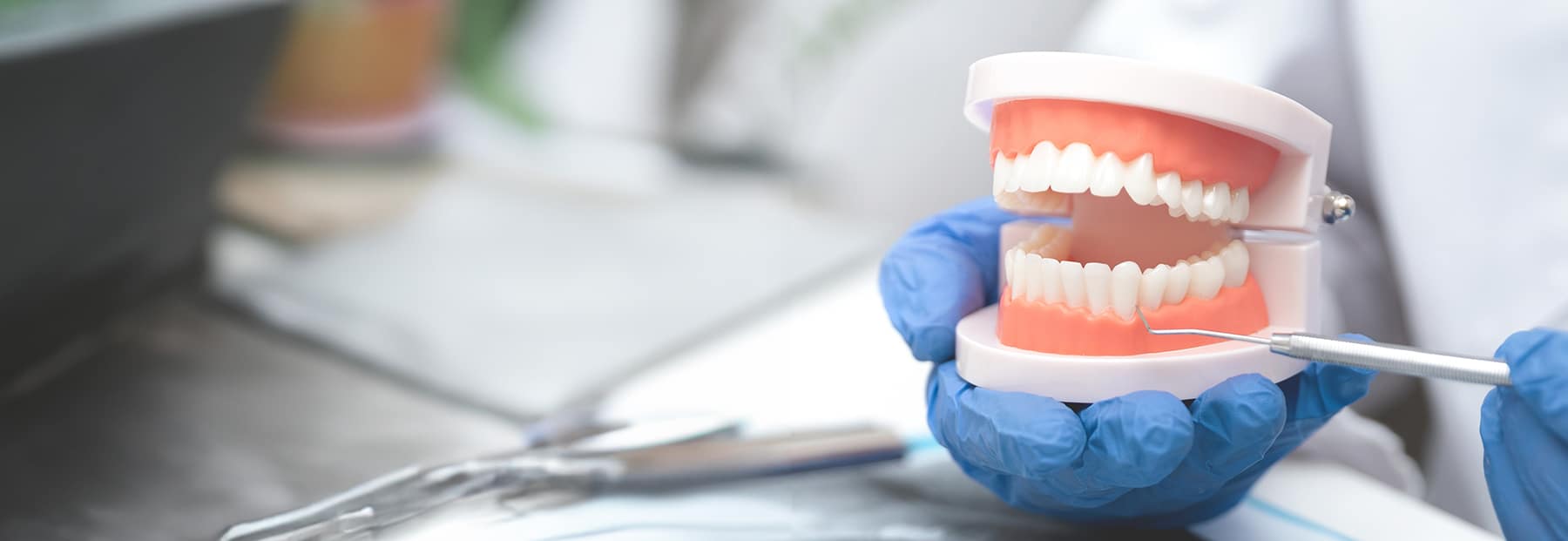
Crown Lengthening
At Leading Edge Periodontics & Dental Implants, we specialize in crown lengthening services designed to improve your oral health and enhance the aesthetics of your smile. Our periodontists utilize advanced lasers and other surgical tools to perform crown lengthening with precision and minimal discomfort. Whether you’re seeking treatment for medical or cosmetic reasons, our skilled team is committed to delivering effective, comfortable care tailored to your unique needs.
What is a crown lengthening procedure?
Crown lengthening is a dental procedure that involves reshaping the gums and bone around a tooth to expose more of the tooth structure. This is often necessary for restorative or cosmetic dental treatments.
Crown lengthening is typically performed to make the tooth more visible, which is essential for placing a crown or other dental restoration. It can also be done for cosmetic reasons, such as to correct a “gummy smile.”
Periodontists perform crown lengthening by recontouring gum tissue, and sometimes bone, to expose more of a tooth’s surface for a crown. It’s a common procedure and often takes less than an hour to complete.
A crown is a tooth-shaped cap that fits over your natural tooth for aesthetic or structural reasons. A crown may be recommended when a tooth is cracked, broken, or misshapen. A crown can also be used to complete dental procedures, such as bridges, root canals, and dental implants. Crowns must be able to firmly affix to an existing tooth.

Dr. Michael Shapiro
Periodontist
“Crown lengthening and gum contouring in general are often used to correct a gummy smile. As part of a periodontal treatment plan, crown lengthening helps restore the natural gum line, so food particles and tooth plaque aren’t trapped below the surface where it’s harder to remove.”
When Is Crown Lengthening Necessary?
Crown lengthening is recommended for an array of dental conditions. The most common conditions requiring crown lengthening are teeth that are too short, tooth decay that is severe below the gum line, or a broken or fractured tooth beneath the gum line.
When a tooth experiences severe decay or breaks, the healthy area that remains is reduced. This affects the success rate of tooth restoration as restorative dental appliances have little surface area to work with. Crown lengthening is the attempt to improve the success rate of restorative dental appliances by exposing more of the tooth’s healthy surface area. With more surface area to work with, various dental appliances have a greater chance of staying put and not weakening or falling off.
The Procedure: What To Expect
Crown lengthening is a common procedure and, while intimidating at first, is not something that a patient should be wary of. Most crown-lengthening procedures take place in the office and can be performed in under one hour. If you need a dental restoration, you will likely be fitted with a temporary crown before the procedure. This is to ensure that your tooth remains protected until your permanent crown can be placed around a month after your crown-lengthening procedure.
Performed by a periodontist while under a local anesthetic (if you have anxiety associated with dental procedures, you can request other methods of sedation), the area of gums surrounding the tooth and the underlying bone in question will be recontoured using specialized surgical instruments or a laser. Your periodontist will recontour the gums and underlying bone until the teeth are of an appropriate length for proper dental appliance application and are symmetrically pleasing.
The Recovery Process
Following the procedure, most patients do not need a great deal of post-operative care other than slight pain management using over-the-counter medications like ibuprofen. An ice pack can help with any facial swelling and alcohol use and smoking should be avoided. You can return to work and begin eating soft foods the day after the surgery but should avoid strenuous activity for two days. Full gum tissue recovery, however, will take one to two weeks; this is when your periodontist will remove your stitches. After four to six weeks, your periodontist will inspect your teeth and gums before clearing you for your permanent restoration.
It is important to note that in the first 24 hours following the procedure, hot foods should be avoided. You may experience an increased sensitivity to hot and cold foods – this is normal. Because the roots of your teeth are now exposed, your sensitivity will increase. However, this will go away with time or when you have your permanent crown applied.
Find one of our convenient locations
Contact Us
Fields marked with “*” are required.
"*" indicates required fields
